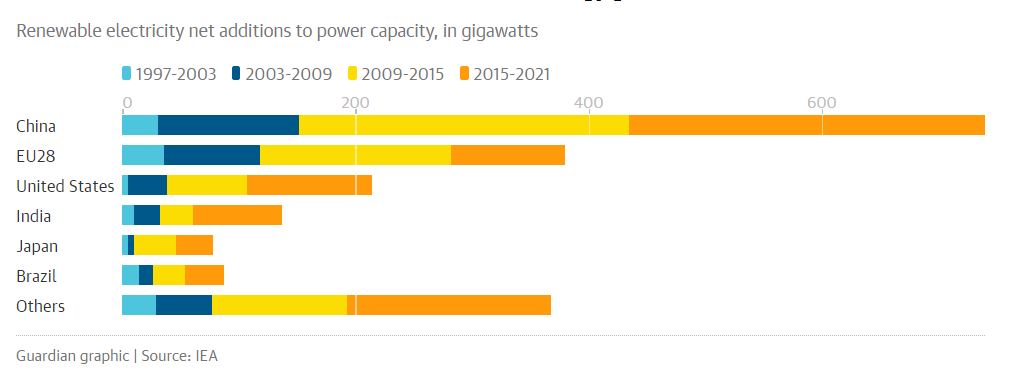A new report by the International Energy Agency says renewable energy — mostly solar and wind — accounted for more than half of net electricity generation capacity added in the world last year. “What I see is we are witnessing the transformation of energy system markets led by renewables and this is happening very quickly,” said Dr. Fatih Birol, executive director of the IEA. “This transformation and the growth of renewables is led by the emerging countries in the years to come, rather than the industrialized countries.”

The Agency said this marked the first time in history that renewables have surpassed traditional fossil fuel energy as the source of new electrical capacity. It predicted capacity from renewable sources will grow faster than oil, gas, coal or nuclear power in the next five years.
Most of that growth will take place in China and India, with the United States also poised to add more energy from renewables. “China is a completely separate chapter,” said Birol. “China alone is responsible for about 40% of growth in the next five years. When people talk about China, they think about coal, but it is changing.”

A total of 153GW of net renewable electricity capacity was installed globally in 2015. That’s equivalent to Canada’s total electrical capacity and a 15% increase over the year before. Net capacity is new capacity minus retired capacity, such as old hydro or coal fired plants being taken offline. China is expected to add a further 305GW over the next five years, followed by India with 76GW.
What is driving the switch to renewables? Economics. “The cost of wind dropped by about one third in the last five to six years, and that of solar dropped by 80%,” said Birol. He added that while the cost of gas had also fallen recently, it was not at the same speed that green energy had become cheaper. “The decline in renewables [cost] was very sharp and in a very short period of time. This is unprecedented.”
Even though the growth in renewable energy is remarkable, it is not enough to meet the commitments made by the nations of the world in Paris last December. “No, it’s by far not enough [the trajectory of growth],” said Birol. Other data compiled by the IEA indicate that renewables have now passed coal as the largest source of new energy in the world. That is an important step toward reducing global carbon emissions.
In the developing world, wind and solar energy are the sources of choice for new electrical capacity. Much of that is due to low costs, but it also reflects the fact that many of those countries do not have a fully developed electrical grid and so can better adapt to distributed renewables than industrialized countries with fully developed grids that are based on centralized power generation.
Not many years ago, it was assumed that the developing nations would turn to coal to fuel their economic growth. That would have been a disaster for the global environment. But the plummeting cost of renewables has made it easier for those countries to chose renewables over fossil fuels. There is much work to be done yet, but at least the world is moving in the right direction.
Source: The Guardian Photo credit: Feature China/Barcroft Images